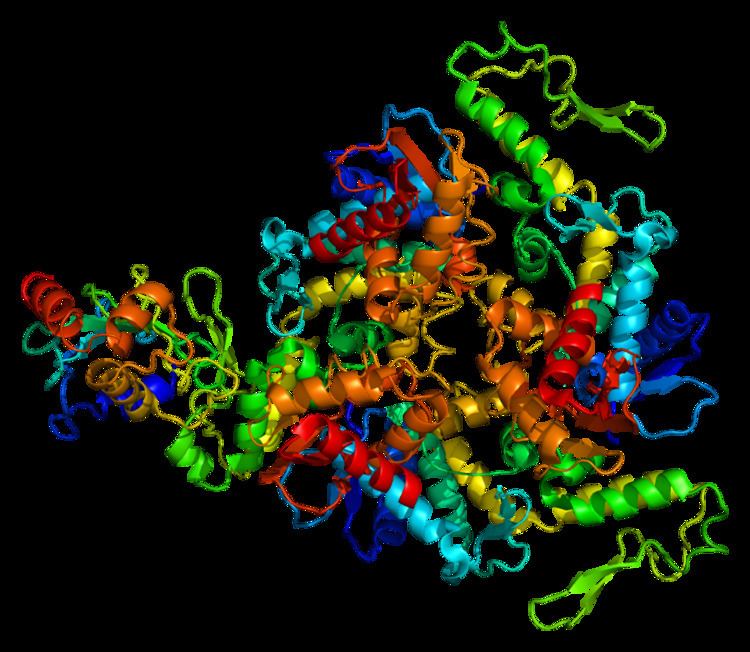Entrez 7337 | Ensembl ENSG00000114062 | |
 | ||
External IDs MGI: 105098 HomoloGene: 7988 GeneCards: UBE3A | ||
Ubiquitin-protein ligase E3A (UBE3A) also known as E6AP ubiquitin-protein ligase (E6AP) is an enzyme that in humans is encoded by the UBE3A gene. This enzyme is involved in targeting proteins for degradation within cells.
Contents
Protein degradation is a normal process that removes damaged or unnecessary proteins and helps maintain the normal functions of cells. Ubiquitin protein ligase E3A attaches a small marker protein called ubiquitin to proteins that should be degraded. Cellular structures called proteasomes recognize and digest proteins tagged with ubiquitin.
Both copies of the UBE3A gene are active in most of the body's tissues. In the brain, however, only the copy inherited from a person's mother (the maternal copy) is normally active; this is known as paternal imprinting. Silencing of Ube3a on the paternal allele is thought to occur through the Ube3a-ATS part of a lincRNA called "LNCAT", (Large Non-Coding Antisense Transcript).
The UBE3A gene is located on the long (q) arm of chromosome 15 between positions 11 and 13, from base pair 23,133,488 to base pair 23,235,220.
Clinical significance
Mutations within the UBE3A gene are responsible for some cases of Angelman syndrome and Prader-Willi syndrome. Most of these mutations result in an abnormally short, nonfunctional version of ubiquitin protein ligase E3A. Because the copy of the gene inherited from a person's father (the paternal copy) is normally inactive in the brain, a mutation in the remaining maternal copy prevents any of the enzyme from being produced in the brain. This loss of enzyme function likely causes the characteristic features of these two conditions.
The UBE3A gene lies within the human chromosomal region 15q11-13. Other abnormalities in this region of chromosome 15 can also cause Angelman syndrome. These chromosomal changes include deletions, rearrangements (translocations) of genetic material, and other abnormalities. Like mutations within the gene, these chromosomal changes prevent any functional ubiquitin protein ligase E3A from being produced in the brain.
Interactions
UBE3A has been shown to interact with:
